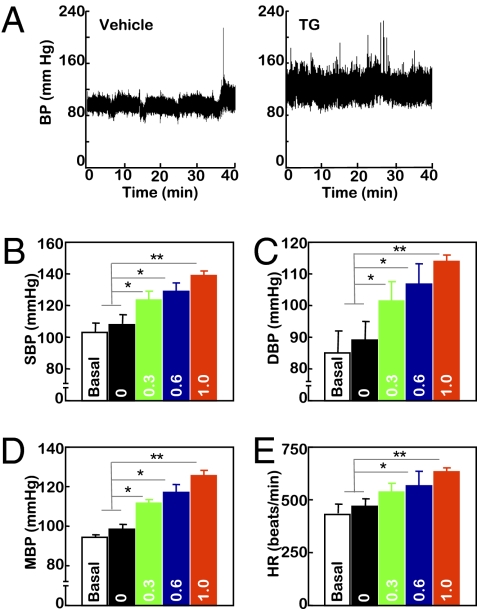Fig. 2.
Short-term brain ER stress elevates BP levels in mice. Mice with third-ventricle cannulation were implanted with BP radio transmitter in the carotid artery for continuous telemetric monitoring of BP and heart rates (HR). TG at the doses of 0.3, 0.6, or 1.0 μg/d or control vehicle (labeled as 0 in the bar graphs) was injected for 3 consecutive d. BP and HR of mice were obtained before the 3-d treatment period to obtain the baseline levels (labeled as Basal) and continuously monitored during the 3-d treatment period. (A) Representative profiles of BP in response to 1.0 μg of TG (Right) vs. vehicle (Left) injection. (B–E) Data represent average BP and HR values over a 2-h period after the final injection on day 3. SBP, systolic BP; DBP, diastolic BP; MBP, mean BP. *P < 0.05; **P < 0.01; n = 4 mice per group. (Error bars reflect mean ± SEM.)

